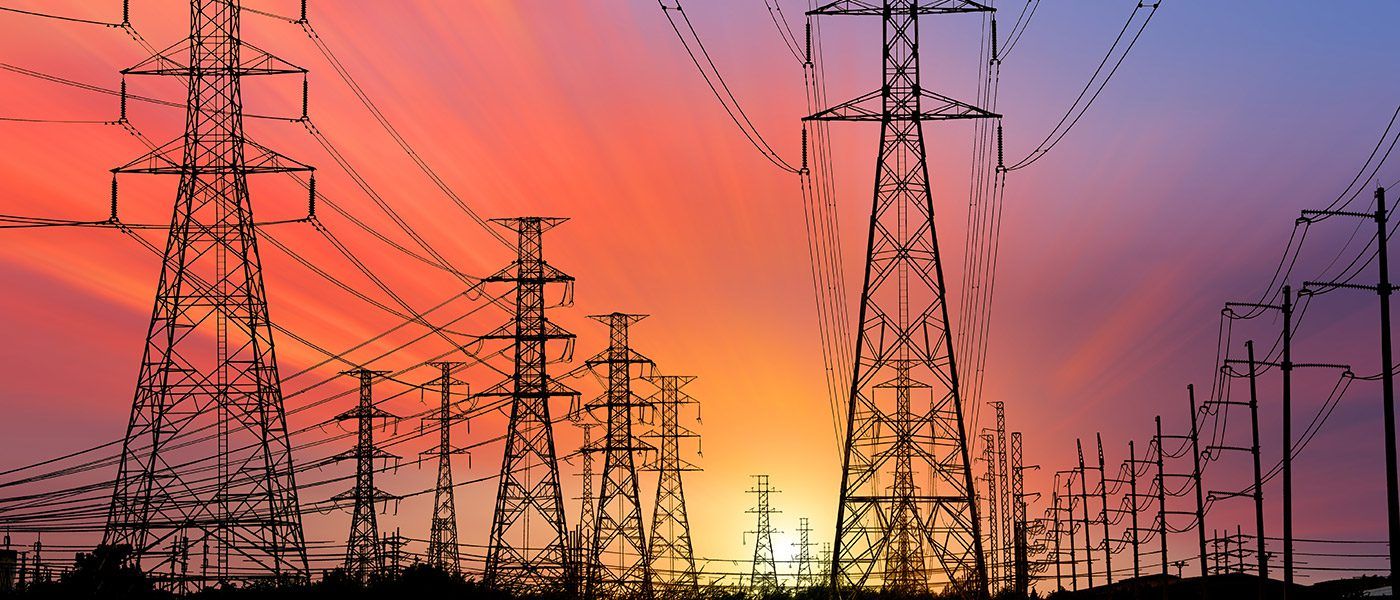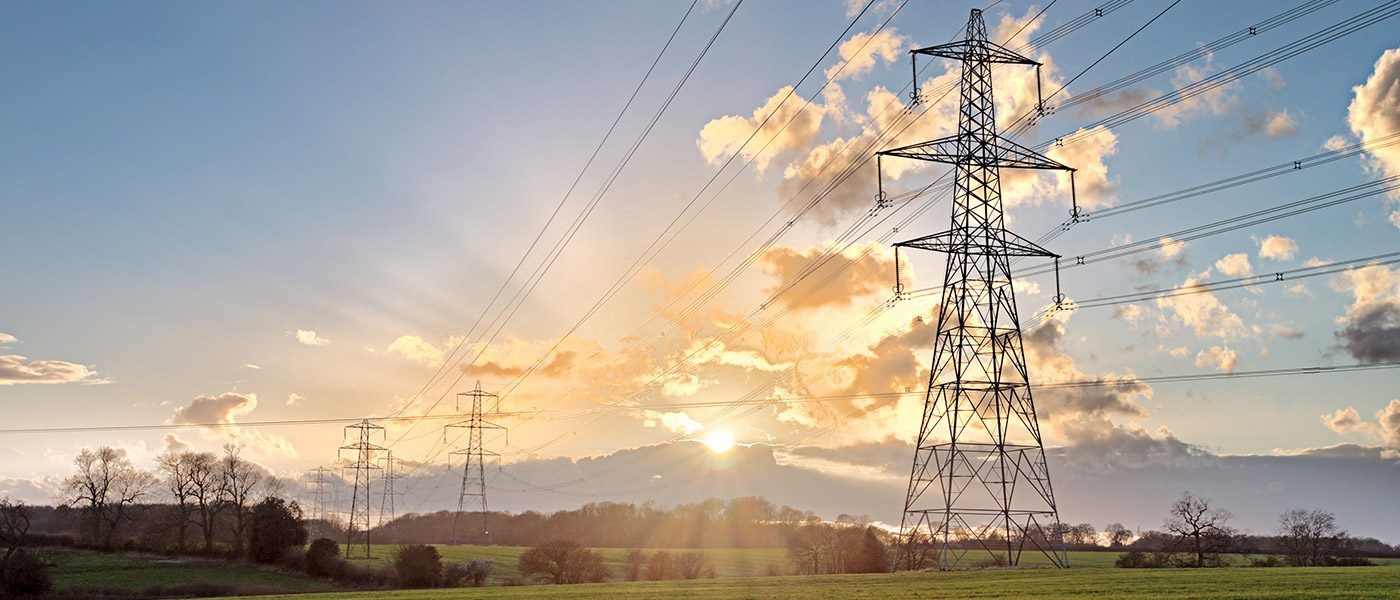News
News

06 Sept, 2022
This year has seen the steepest rise in energy prices for years with households across the UK and EU now paying a staggering 54 per cent more than in 2020. While the governments of many EU countries are offering their residents multibillion-euro aid packages to soften the blow, Brits are not feeling reassured that similar help is on its way. With household budgets being stretched, many people are looking into alternative methods of powering their homes. How do solar panels work? Energy for solar panels is derived from the sun, which can be used to produce electricity and heat. The technology directly converts sunlight into electricity by exploiting the photovoltaic effect. This creates voltage or electrical current when exposed to light. How many solar panels will I need? A three-bedroom, semi-detached property housing four people usually needs about 10 solar panels. Purchasing too many can be an unnecessary expense whilst too few can make your purchase unprofitable. A house of that size would likely have an annual electricity usage of 2,900 kilowatt hours (kWh) every year. 1kWh is able to provide electricity to an appliance for up to one hour. How much will it cost to install solar panels on a UK home? Solar panels aren’t cheap. In March 2022, the Energy Trust reported that installation costs approximately £6,500 (€7,827) for a three-bedroom, semi-detached property housing four people. According to the Money Saving Expert, if you’re home during the day, it’ll take you less time to make your money back. You’ll retrieve the installation costs in about 13 years on average, if you live in the middle of the country. Comparatively, if you’re home in the evenings only, it could take you 24 years. Many people would like to install solar panels, but such a high upfront cost is off-putting. Is there financial aid for solar power installation in the UK? Financial aid from the UK Government isn’t available. Until 1 April 2019, the Feed-In Tariff (FIT) scheme was offered in an attempt to encourage people to use renewable energy to power their homes. But now the Government doesn’t believe individuals need to be subsidised as much, because the price of solar panel systems has reduced. Since the discontinuation of the Feed-In Tariff, the new Smart Export Guarantee (SEG) has been offered as an alternative by the Government. The new scheme allows households to get paid for any extra renewable energy they generate. That means if you generate energy at home from natural resources, such as the wind or sun, you’re able to sell any you don’t use. Where are solar panels popular in Europe? Solar power already plays an important role in the European energy mix. In 2017, the EU generated 3.6 per cent of its energy from photovoltaics and by 2040, solar energy has the potential to meet 20 per cent of the bloc’s electricity demand. But for solar power to become more of an appreciated and developed source of clean energy across the EU, and the UK, costs must be lowered and their efficiency improved. Despite this, Sweden, Finland, Latvia, Austria and Denmark currently produce more than 30 per cent of their total electricity from renewable sources. In France, a state grant is available if you plan to use part of the produced electricity for yourself, and sell part of it back to the national grid – known as vente en surplus. While in Spain, regional grants are occasionally offered, but with a limit on available funds. These grants are not means-tested, but do require proof of Spanish residency with a NIE number. Is the UK sunny enough to use solar panels? Despite its reputation for having grey and cloudy weather, the UK gets the same amount of solar energy as certain areas in France and Spain. And as countries with high solar power use, such as Sweden, Finland and Latvia prove, lack of heat isn’t a problem because the cells work with the sun’s light. Like many electrical appliances, solar photovoltaic cells surprisingly perform best in cooler conditions, so solar power works virtually anywhere in the world. Is now a good time to invest in solar panels? Solar panels are a significant investment, but after the initial cost, they’re more likely to save you money. If you’re eligible for the Smart Export Guarantee (SEG), there’s also a chance you could make some money back too. With the cost of living crisis rising further, the electricity your panels generate could reduce the cost of your energy bills - and you’ll be reducing your carbon footprint at the same time.

06 Sept, 2022
The UK is failing to enact the policies that would put it on track to reach net zero emissions by 2050, according to a progress report by the Climate Change Committee. The head of this expert body, which advises the government on its climate strategy, described the UK’s record on home insulation in particular as “a complete tale of woe”. Gas heating in draughty homes is one of the country’s biggest sources of carbon emissions – and a leading cause of poor health and poverty as energy prices remain sky-high. So what would it take to turn this around? “The transition to net zero emissions is often framed as a race to make new stuff – such as electric vehicles and wind turbines – as fast as possible,” says Ran Boydell, a visiting lecturer in sustainable development at Heriot-Watt University. “That’s actually the easy part. The hard part will be modifying what already exists – and that includes people’s homes.” Cavity wall insulation, triple-glazed windows, solar panels, low-carbon heating systems such as heat pumps which run on electricity: all of these things and potentially more are needed to neutralise the contributions to climate change made by 26 million homes (the number of existing homes Boydell anticipates will still be around in 2050). That would eliminate 68 million tonnes of CO₂, which is about 15% of the national total. “The idea is to ensure that no home emits greenhouse gases by burning fossil fuels for energy and that, eventually,.

06 Sept, 2022
Last week's intervention from the Treasury was a huge relief for the millions of families up and down the country facing the grim prospect of a 42 per cent rise in energy bills from October. In addition to April’s price cap increase, which has seen household bills rise to almost £2,000, it became clear that the package of support announced in February was insufficient and the government could no longer justify offering a rebate that had to be paid back to the poorest consumers. High prices have been driven by rises in wholesale gas prices, exacerbated by Russia’s invasion of Ukraine. However, our housing stock, which is particularly leaky compared to elsewhere in Europe, has left us uniquely exposed. In addition to accelerating the rollout of renewable energy, the energy crisis has highlighted we must go further on price protections in the market and energy efficiency. Disabled people and pensioners not in receipt of means tested benefits will still have to find between £650 and £800 Unprecedented times call for unprecedented action, and I applaud the Chancellor for intervening and providing targeted support for the most vulnerable. Pensioners in receipt of means-tested benefits will now have the full £800 October price increase covered by the Treasury, through the combination of one-off payments and an increase in the rebate to £400, a welcome move. Yet National Energy Action (NEA) estimate that with bills having doubled in the last year, some vulnerable groups including disabled people and pensioners not in receipt of means tested benefits will still have to find between £650 and £800 to cover the price increases seen throughout the year. Last week Ofgem also announced changes to the energy price cap, which will see it reviewed every three months rather than every six. This could lead to an unwelcome increase in the price cap in the middle of winter. There have now been two fiscal interventions to support households with energy bills this year. These measures are a welcome relief, but not a long-term solution. In the Queen’s Speech, the government committed to legislate for the energy price cap to be extended beyond 2023. This presents an opportunity to increase the protections in the energy market available for the most vulnerable households. A social tariff for energy – a below market rate price protection which could be mandated across all suppliers – could be a route towards this. This would present a fair way to provide an affordable price for energy to some of most vulnerable households – particularly those who use a prepayment meter, who are at risk of losing access to energy if they cannot afford to top up. It would provide a more affordable price of energy, shielded from market forces, and would reduce the need for regular fiscal interventions to support people with the cost of energy bills. In addition to reviewing price protections, it is imperative government support a national effort on energy efficiency to save up to £600 on energy bills. This should be a priority for three reasons. Firstly, it will have a transformational impact on the affordability of energy. The government has a statutory requirement to ensure all fuel-poor households are at EPC band C, an adequate level of energy efficiency, by 2030. Secondly, it is needed to meet our climate objectives in the most cost-effective way. Last, but no means least, it will increase our security of supply by reducing our demand, which will be crucial given the uncertainty of gas supplies this winter and beyond. There are quick wins on this. Something the government can do right now is bring forward the delayed legislation for the next iteration of the Energy Company Obligation (ECO4) scheme to support low-income households with vital energy-saving insulation measures. This must be a priority. Failure to do so could see up to 50,000 households miss out on such measures ahead of another difficult winter.

06 Sept, 2022
(Bloomberg) -- The UK should launch an “an all-out national effort” to reduce energy bills using efficiency measures, according to the head of a major business group. The government’s existing efforts to support households amid soaring energy costs are only temporary, and need to be followed with a major plan to decarbonize homes, according to Tony Danker, the director general of the Confederation of British Industry. The government should commit £1 billion ($1.3 billion) in annual funding for retrofits, the CBI said in an emailed statement. The UK is battling with a cost of living crisis that’s set to see average household energy bills more than double in October compared with a year earlier. While the government is pushing for greater security of energy supply, including by keeping open coal plants, there’s been little action on measures to reduce consumption. “It’s time to get serious about energy demand,” Danker said in comments prepared for the CBI’s conference in London on Tuesday. “There’s nothing libertarian about asking people to wait decades for Government to fix supply. Let’s do something now to give people the power they need – literally – to manage the cost of living.”

06 Sept, 2022
The government needs to kickstart the “retrofit revolution” with major investment as many properties, especially low value properties, cannot meet energy efficiency requirements. According to the latest report from the Building Back Britain Commission, in the average English local authority 58.4 per cent of homes are below the Energy Performance Certificate (EPC) band of C and it will cost around £200bn to get them up to this standard. There is upcoming legislation that could mandate that from 2025 rented property has to be EPC rated C or above. The commission is made up of major organisations in the UK, including chief executives of Barratt Developments, Legal & General, Mace, Thakeham, NHBC and Riverside Group. It noted that there were five key risk factors around the effectiveness of retrofit, which includes very low EPC rating, old housing stock, conservation requirements, low market value and EPC band C being unattainable with current technology. The report said that the “tipping point” for homes was £162,000, with homes under this threshold “likely to be financially unviable” for retrofit without financial support as the cost would exceed house price gain. It continued that one third of homes in levelling up areas were below this critical price threshold. It added that in the UK there were 2.8m homes valued at under £162,000 with an EPC below C in levelling up areas. The report noted that 10 per cent of homes could not reach an EPC band C with current retrofit technology, and this rose to 20 per cent in the city of London. The commission urged the government to prioritise low-value housing in levelling up areas, adding that this would help progress towards net zero target as it would give people more energy security. It also called for new build properties that are going to be constructed to have the “highest possible levels of emissions reductions”. The report added that new build developers were already making “significant steps forward in recent years” and new build homes emit two tonnes less carbon each that average existing homes. However, the report said that more needed to be done to “remove constraints and enable the transition to net zero to happen at the scale and pace required”. Actions include partnering with the private sector on policy, encouraging more sustainable developments and promoting deeper integration of modern methods of construction. It continued that the private sector would have a “critical role” to play in providing additional capital to improve energy efficiency through things like green mortgages. Five key actions It said over the next 10 years, householders in low value homes the government should provide grants via public borrowing. Householders in higher value homes should be able to secure low-interest unsecured loans over the next decade at similar rates to government borrowing. Funds from growth in investment should be used to create incentives,, through research and development tax credits, for the uptake of net zero construction technologies. It added the government should consult on how to improve the take-up of green mortgages and review residential property taxes to see if changes could be made to increase demand for energy efficient properties. The report said that the government should acknowledge the challenges that “older homes beyond realistic repair” and establish “housing decarbonisation zones”, where Homes England and local authorities develop local programmes to replace this housing stock.

06 Sept, 2022
Energy suppliers work closely with Government and stakeholders to offer consumers opportunities to be more energy efficient. Energy efficiency is essential to help consumers reduce their energy consumption and improve the comfort of their homes. It is also central to achieving the UK’s commitment to reducing its greenhouse gas emissions by at least 80% by 2050, relative to 1990 levels. Energy suppliers have an obligation to deliver energy efficient measures to householders via the Energy Companies Obligation (ECO). ECO was introduced in Great Britain at the beginning of 2013 and replaces two previous energy efficiency programmes, the Carbon Emissions Reduction Target (CERT) and the Community Energy Saving Programme (CESP). There are a number of measures that can help improve energy efficiency at home, from double glazing and insulation to efficient light bulbs. Customers can take small steps to save energy, such as purchasing energy-efficient appliances, ensuring appliances are not left on stand-by, using energy efficiency light bulbs, and insulating walls. Different homes might need different forms of insulation – be it loft insulation, cavity wall insulation and solid wall insulation, depending on how the property is built, but insulation can notably reduce all heating bills. Energy Companies Obligation The Energy Companies Obligation (ECO) is a domestic energy efficiency programme to provide added support for packages of energy efficiency measures. These measures can help with cutting down energy loss from a building and lead to less energy use. Support includes insulation and heating packages to low income and vulnerable households and insulation measures to low income communities. Energy efficiency plays a key role in helping to lower energy bills. Following installation of most measures the difference will be immediate. Assuming that a consumer has been heating their home to an adequate level, they can continue doing so, but by using their heating less, resulting in significant bill reductions. Each house will require different measures for the optimum result, which is why it is important for the householder to work closely with their provider or installer to select best options. ECO creates a legal obligation on energy suppliers to improve the energy efficiency of households through the establishment of two distinct targets: The Carbon Emissions Reduction Obligation (CERO) which focuses on the promotion of hard-to-treat homes. Solid wall insulation and hard-to-treat cavity wall insulation are two examples. Other insulation measures and connections to district heating systems are also eligible. Some CERO must also be delivered in rural areas. The Home Heating Cost Reduction Obligation (HHCRO) which focuses on the promotion of measures which improve the ability of low income and vulnerable household to heat their homes. This includes actions that result in heating savings, such as the replacement or repair of a boiler. There are lots of opportunities for customers to access energy efficiency improvements via the ECO. To find out more, contact your energy supplier. Changes to ECO The most recent ECO scheme (ECO 3) commenced on 3 December 2018 and is a two-year obligation that will run until 31 March 2022. This iteration of the scheme is formed entirely from the HHRCO, and suppliers are obligated to mainly promote measures that will support low income, fuel poor and vulnerable households to heat their homes. Read more information on Energy Companies Obligation on Ofgem’s website.

06 Sept, 2022
ONS data also finds that almost half of adults find difficulties in paying for electricity and gas. A quarter of UK households are looking at improving the efficiency of their homes in response to the surging cost of energy, according to official statistics, that also found almost half were struggling to pay their electricity and gas bills. A survey by the Office for National Statistics covering the two weeks to May 22, found that 26 per cent of respondents were looking at ways of improving the efficiency of their properties, up from 19 per cent last autumn. Nearly half of households reported difficulties in affording their energy bills, which have soared since April when Ofgem the regulator raised the price cap in April by £693 to £1,971 a year on average. More than one in five respondents had to increase borrowing as a result of the rising cost of living, the highest proportion since November, the ONS found. Almost 90 per cent said their cost of living had risen over the past month, up sharply from 62 per cent who responded to the same question in November. Improving insulation, switching energy suppliers and installing solar panels were named as the most common energy-efficiency measures being considered, the ONS found. Other options, including installing a smart meter or replacing the source of heating. Mike Brewer, chief economist at the Resolution Foundation, said that it was “encouraging” to see more people thinking about ways to better insulate their homes. This was “a key part of our net zero transition, and the long-term solution to lower energy bills,” he added. Please use the sharing tools found via the share button at the top or side of articles. Copying articles to share with others is a breach of FT.com T&Cs and Copyright Policy. Email licensing@ft.com to buy additional rights. Subscribers may share up to 10 or 20 articles per month using the gift article service. More information can be found here. https://www.ft.com/content/70c16a3f-17d2-4d30-bcc9-d0b6834a8449 But the survey also found that more than a third of people said cost was a big barrier to making these changes. This was a particular issue facing low-income households, with almost three-quarters in homes that need energy efficiency improvements. Another 15 per cent said they felt improving energy efficiency would not offer value for money. “Government support is crucial to making this home insulation drive a reality, but it will require a step change in approach given that the number of roofs and walls being insulated today is down 90 per cent on a decade ago,” said Brewer. The findings follow criticism that the government’s £15bn package to reduce energy bills announced on Thursday, including a windfall tax on oil and gas producers, did not include measures to improve the energy efficiency of the country’s housing stock. Mike Thornton, chief executive, Energy Saving Trust, welcomed the financial help but added that he would like to have seen at least half of the £5bn the Treasury said its levy on North Sea producers would raise “committed to energy efficiency improvements through a nationwide retrofit programme, starting with the lowest income households.” Thornton added that saving energy is more cost-effective than generating energy and “funding for insulation would further help reduce energy use and costs in both the short and long term.”

06 Sept, 2022
The UK government won’t be able to insulate as many homes as planned before winter after it scaled back a £1 billion ($1.2 billion) boost to its flagship scheme to help some of the country’s poorest households curb their energy use. A plan was dropped to double the £1 billion of funding in the so-called Energy Company Obligation after Boris Johnson’s resignation as prime minister, according to people familiar with the matter who asked not to be named because the matter is private. There is a further £30 million from existing funds that hasn’t been spent and will be lost, according to another person. The UK is in danger of falling behind with efforts to improve the energy efficiency of its leaky homes. New policy has been further hindered by the caretaker government which said it won’t be making any major changes while a new leader is elected. Better insulation is central to cutting demand and tackling climate change by reducing dependence on fossil fuels. The lack of progress comes even as yearly bills are set to rise to an unprecedented £3,420 in October, pushing millions of households into fuel poverty. The government has been criticized for failing to help homeowners save energy in the middle of a crisis that’s been made all the more acute by Russia’s invasion of Ukraine. The fourth tranche of £1 billion ECO was supposed to be doubled to help households ahead of winter. The scheme is going ahead without the extra planned funding, according to a government spokesperson. “Thanks to government support, the number of homes with an energy efficiency rating of C or above is at 46% and rising, up from just 13% in 2010,” the spokesperson said. There is also about £30 million ($36.1 million) left over from the government funds to help local authorities improve energy efficiency in the last financial year, according to a person familiar with the matter. That’s about 10% of the budget of the two programs. But the UK’s departure of the European Union and supply chain snarls meant the government wasn’t able to fully spend funds from its Social Housing Decarbonisation Fund and Home Upgrade Grant, the people said, asking not to be identified because the information is private. Brexit raised costs linked to product certification and increased paperwork on imports. Likewise, the pandemic and Russia’s war in Ukraine caused major shortages of materials, long lead in times on products and costs rising faster than inflation, one person said. That’s led to unfulfilled contracts or less ambitious projects than first envisaged. Officials in the Department for Business, Energy and Industrial Strategy and the Treasury had been in discussions to redirect the leftover cash, but those talks collapsed due to the Tory leadership contest, the people said. A decision now can’t be taken before the new leader comes to power in September. Over the past decade, a range of energy-efficiency measures such as home insulation have been botched or abandoned under successive prime ministers, according to the Climate Change Committee. Insulation rates remain well below the peak rates of delivery achieved before 2012, when key policies were scrapped, the statutory body said in 2019.

26 Aug, 2022
Today (26 August), Ofgem has announced the new energy price cap, which will take effect from 1 October 2022. The price cap will increase to £3,549 a year for dual fuel for an average household paying by direct debit. This is an 80% rise from the current cap of £1,971 per year. For customers on pre-payment meters, the increase is from £2,107 to £3,608. This cap will remain in place until it is adjusted again in January 2023. Today’s news of a further increase to the price cap on energy bills will be very concerning for people across Great Britain. With predictions that the cap could increase again next year, it has never been more important for the UK Government to help shield households from the impacts of these rising energy costs – crucially both in the short and long term. Mike Thornton, chief executive of Energy Saving Trust, said: “Households across the UK face a dire winter – and the UK Government’s response needs to match the scale of the emergency. While rapid action to support the most vulnerable is critical, we also need robust measures to ensure this does not happen again. Forecasts suggest that price hikes may continue beyond 2023, so as well as shorter-term help with bills, this long-term problem requires long-term solutions that deal with the underlying issues. “Improving the energy efficiency of the UK’s inefficient homes through a mass retrofit programme is the most effective way to permanently get bills under control, reduce our reliance on a volatile global fossil fuel market and cut carbon. “Reducing energy demand reduces energy bills, regardless of the volatility of energy markets. Combined, energy efficiency improvements in heating, insulation, lighting and appliances could reduce energy consumption in UK households by a quarter each year. Latest estimates from the ECIU show that better insulated homes could save well over £1,000 a year on bills at the latest price cap level for October. “Alongside this, we also need to ramp up investment in renewables and energy storage – including low carbon heating and solar. Tackling the energy crisis is inextricably linked to addressing the climate emergency and the UK’s over-reliance on the global fossil gas market, emphasising the urgency to transition to net zero. “Every day of inaction increases the cost of the challenge: we cannot afford to wait for the next Prime Minister to be decided. We need government to show leadership and step up now to provide both the immediate and longer-term responses to this crisis that are so desperately needed, including scaling up energy efficiency programmes.” If you’re struggling to pay your energy bills, there is help available wherever you are in the UK. Find more information, including support near you.
© 2022 Copyright Retrofit Coordination Services Limited.
All rights reserved.
Company number 11183411
